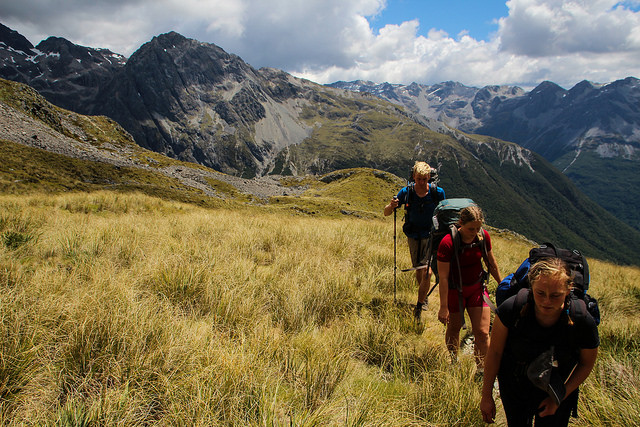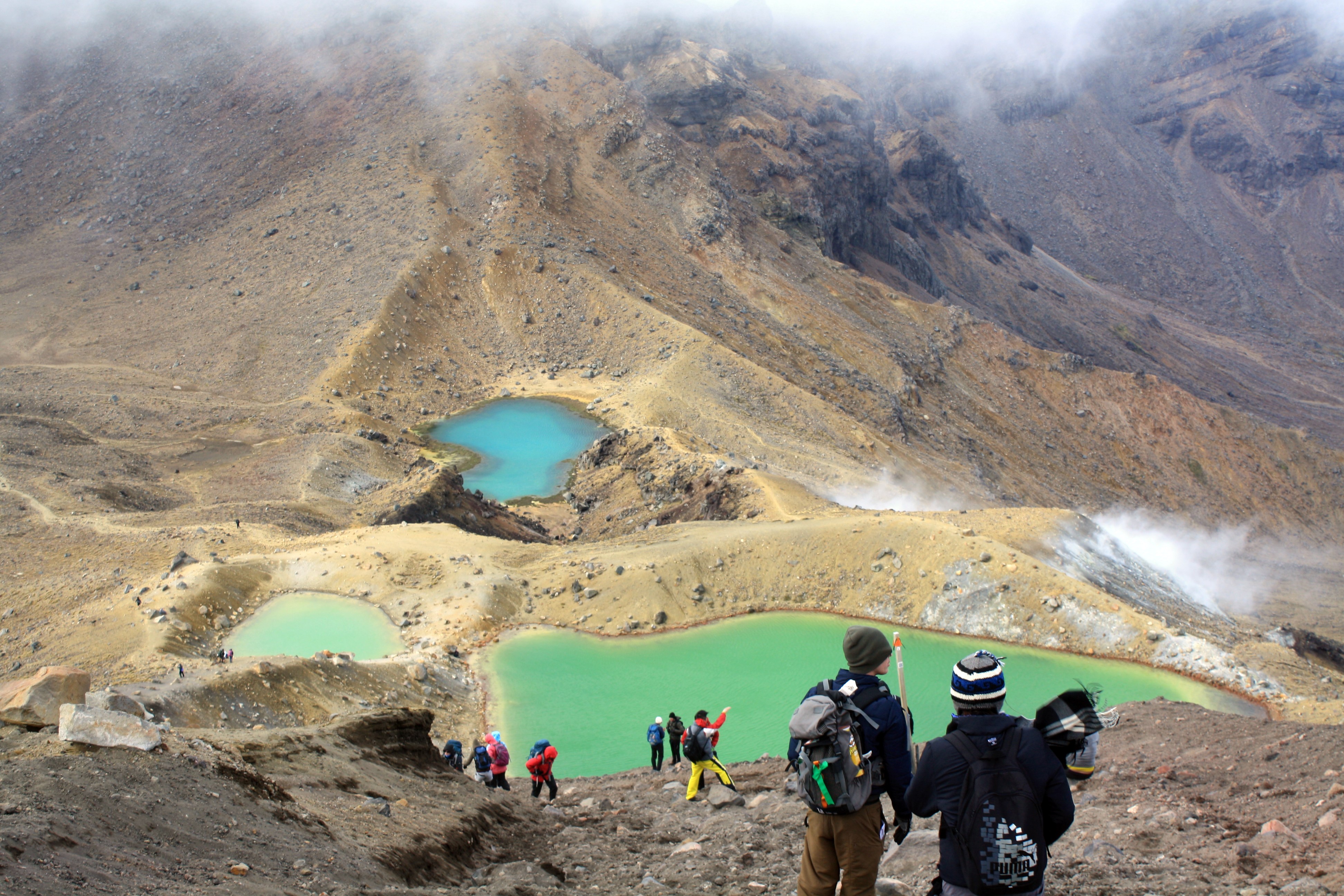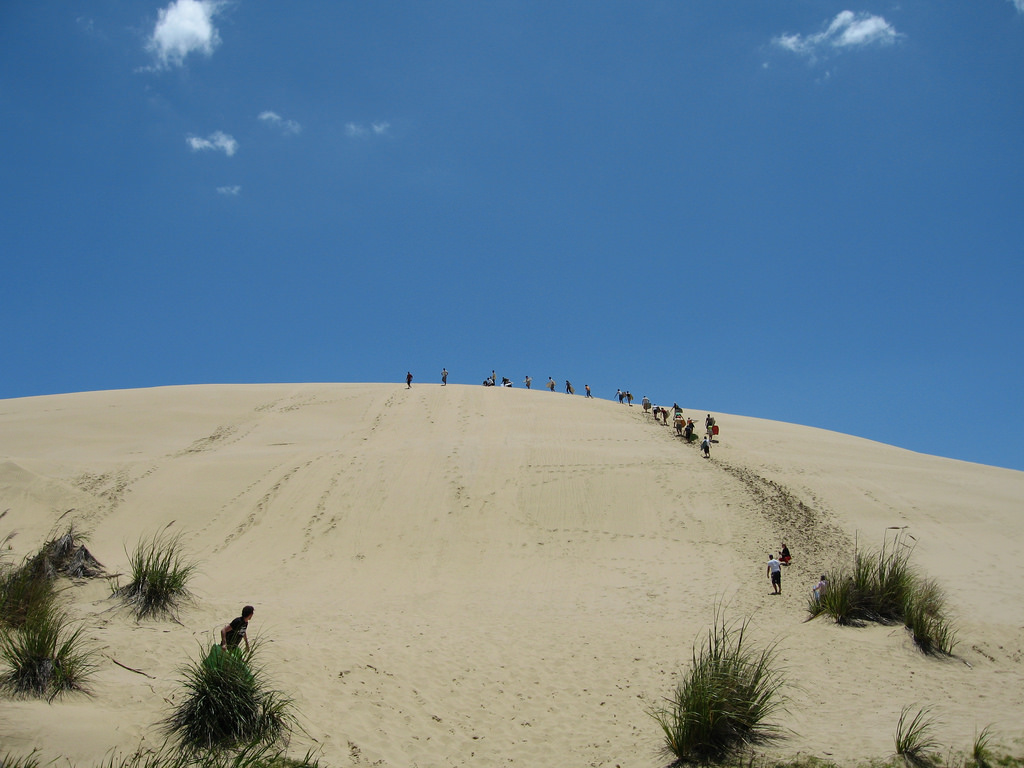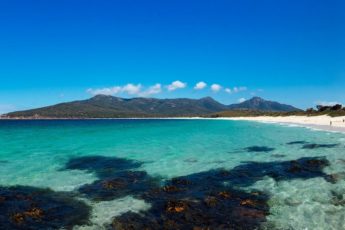
Travers Saddle on the Te Araroa Trail. Photo: Ulysse Bellier
The Appalachian Trail. The Pacific Crest Trail. The Camino. The Great Himalaya Trail. For long-distance hikers, these are some of the world’s best treks, and the new (well, as of 2011) Te Araroa trail in New Zealand is a worthy addition to the list!
The basics
Te Araroa stretches all the way from the northernmost point of Cape Reinga to Bluff in the far south. Many locals don’t even know about Te Araroa – parts of it are still rough and undeveloped. Linking cities, towns and villages, forests, volcanoes, lakes and farmland, it spans 3000 km (1800 miles) and offers up a range of unique natural and cultural experiences. About half consists of single track, with another 30% roads, 15% beaches and the rest rivers. Trail signs and orange triangles signal the way, although the level of markings varies hugely by section. Parts of Te Araroa, in fact, lie on private property!
The North Island is warmer, more populated, and offers more of a cultural flavor. There’s more in the way of bush and beach walking, where the South Island is mainly characterized by mountains, valleys, and wilderness. (If you only have time for one island, the South Island is the way to go.) You’ll find yourself among Lord of the Rings landscapes – fording rivers, tracing clifftops – and you might even get a glimpse of the famous Southern Lights.
Timing the trail
Te Araroa is billed as a 5-month experience, though it can be done in less (4 months) or stretched out even longer for a more leisurely hike. Plan for 50-80 days for each island, depending on fitness, weather, and pace. Most hikers head southbound to make the most of the weather. October to April is the main hiking season; New Zealand’s summer runs from December to February.
Most people tackle Te Araroa from north to south and start between late September-December. The main consideration is when you would expect to reach the Tararua Ranges in the North Island, or high country in the South Island – the areas most prone to extreme weather. It isn’t recommended to start before mid-September or finish after April.
Trail highlights
Te Araroa does not include most of the Great Walks of New Zealand, but it’s easy to plan side trips to hike those separately, or to take in other sights and attractions. Whether you choose to go the thru-hiking or section hiking route, it’s not hard to find something that fits the bill.
 The Emerald Lakes along the Tongariro Alpine Crossing. Photo: Esther Goh
The Emerald Lakes along the Tongariro Alpine Crossing. Photo: Esther Goh
Pressed for time? You might pick and choose parts of the route to skip some of the less scenic parts. Some of the best short walks are:
- Bream Tail Mangawhai Walkway – Northland
- Puhoi Track – Auckland
- Tongariro Alpine Crossing – Whanganui
- Wellington City – Wellington
- Gladstone to Wanaka – Otago
- Long Hilly Track/Tihaka Beach Track – Southland
If you’ve got time on your hands, these multi-day walks could be up your alley:
- Russell Forest to Whangarei Heads – Northland (6 Days)
- Pirongia Traverse – Waikato/King Country (2 Days)
- Whanganui River – Whanganui (4 to 6 Days)
- Massey to Levin – Manawatu (2 to 3 Days)
- Pelorus River Track – Nelson/Marlborough (3 to 4 Days)
- East Ahuriri Track – Canterbury (1 to 2 Days)
What to watch out for
New Zealand’s weather is famously unpredictable – the “four seasons in one day” saying exists for a reason! Rain, heat, wind, and potentially snow are all elements to be prepared for. Sunburn and sandflies come hand-in-hand with a kiwi summer. Parts of Te Araroa get seriously muddy and water levels can rise quickly, making crossings treacherous. As long as you have a moderate level of fitness, you should be fine – but it’s important to be prepared for all conditions.
 90 Mile Beach on the Te Araroa Trail. Photo: Dean Bromley
90 Mile Beach on the Te Araroa Trail. Photo: Dean Bromley
Practical tips
Your main source for trail information will be the Te Araroa Trust website, your one-stop shop to download maps and vital info, and check the status of the trail for any closures or reroutes. Another rich mine of information is the Te Araroa Facebook Group; there are also year-specific groups for hikers to join.
Plan to budget between NZD$7,000-10,000 to hike Te Araroa. While you don’t need a permit for the walk and there are no compulsory fees, be sure to register online. The Te Araroa Trust (which relies on donations and grants) also suggests a donation of $500 per person.
Unless you’re an Australian or UK citizen, you’ll probably need a visa. Check here! Some nationalities can visit for up to 3 months visa-free, but if you’re planning to hike the entire Te Araroa Trail you’ll probably need longer than that. The visitor visa permits you to stay for as long as 9 months.
You’ll most likely fly into Auckland and from there, take a flight or bus north to Kaitaia and another bus to Cape Reinga.
Te Araroa passes through lots of towns and cities, so it’s easy to resupply every few days. Stock up at the supermarket (Pak’n Save and Countdown are the two main chains) or, at a pinch, pick up bits and pieces at local dairies and petrol stations.
The Department of Conservation (DOC) manages over 950 huts throughout the country and it’s well worth buying a DOC Hut Pass (NZ$92 for 6 months or $122 for a year). It gives you unlimited use of most huts and campsites. Most backcountry huts operate on a first come, first served basis; there are a few that can be booked and typically need to be paid for separately.
See the Trail Notes on the Te Araroa website for details of where to camp in each region. There are also “Trail Angels” en route who are happy to help trail walkers out with a bed for the night, or rides or food – see trailangel.co.nz.



